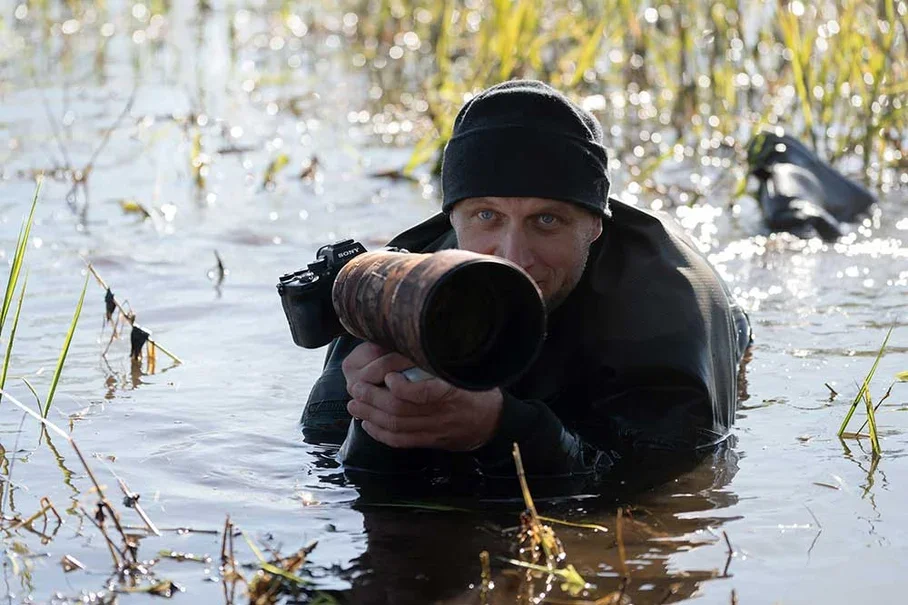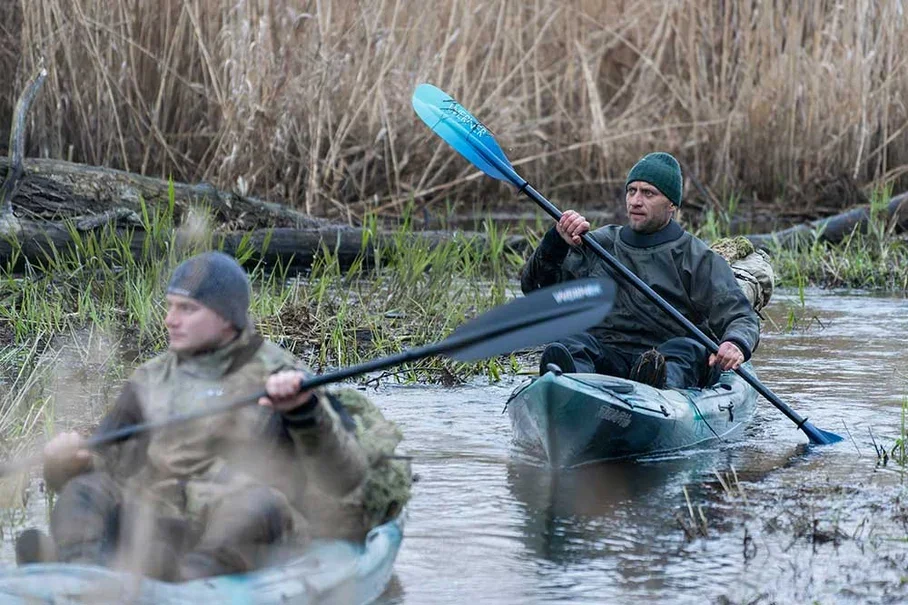Protecting Biodiversity on the Oder
by Rivers are Life Team
When wildlife photographer Piotr Chara first swapped his fishing pole for a camera, he sought the beautiful sceneries of the Oder River from his childhood.
“Being in touch with the mystery of the river made a great impact on me,” Chara says. “I remember its ripple, I remember its scent.”
He spent the days fishing on the bank of the Oder with his father, taking in the beautiful migratory birds flying overhead and taking to the water’s surface for food. But the Oder River has undergone many changes since Chara’s youth.
The Oder is the second-largest river in Poland and is over 850,000 miles (850 km) long. It starts in the Czech Republic and flows through Poland before joining the Baltic Sea. The river used to have multiple flowing channels but was modified to make boat transportation easier.
This significant shift in its natural habitat, in addition to increased agriculture, harmed its wetlands. Fewer wetlands lead to reduced resources for both the native and migratory species that reside there, particularly endangered birds, and makes it harder for biodiversity to survive.
Dissolving in the Universe
Piotr’s photography is the lifeblood of all of his environmental actions. Through his camera he bears witness to both tragedies and elevating moments, including the beauty of nature and the pain of its degradation. As a photographer and an advocate of the river, he feels he carries a responsibility to share his knowledge and passion with others.
“The essence of photography is dissolving in the universe,” Chara says. “I stop functioning as a human… I am part of what I see.”
But the natural beauty he experiences through photography is vanishing. As he witnessed the wetlands of his childhood memories disappear before his lens, he was inspired to take action.
Chara founded Green Valley of Oder and Warta (ZDOW) to protect the river environment. The foundation works to restore and protect the wetlands and their natural biodiversity by reversing degradation and establishing safe breeding grounds for migratory birds.
“Our beloved rivers are in peril,” Chara says. “My mission is to save at least the one I grew up with.”
Supporting Biodiversity for Healthy Wetlands
A healthy river needs wetlands in its valley for plankton to thrive, and amphibians and fish to lay their eggs. In addition to providing homes for thousands of organisms, this environment absorbs carbon through photosynthesis, making them natural storage cells of carbon dioxide.
Throughout history, the importance of these ecosystems has been overlooked in favor of agriculture. Particularly in the last two decades, the wetlands were dried up to create more farmland, resulting in irreversible changes in most cases.
“The latest UN report indicates that 80% of wetlands globally were transformed and perished,” says Dominik Marchowski of the Polish Academy of Science.
One of ZDOW’s initiatives is to use heavy machinery to recreate wetlands that were destroyed through dewatering and draining. By restoring the wetlands, they’re setting the stage for biodiversity to return to the banks of the Oder.
“We are fighting for the creation of a reverse on this last backwater,” Chara says. “It’s not an easy project, however, there are indications we will soon celebrate by preserving this treasure forever.”
While wetland restoration is at the top of its priority list, the foundation’s very first mission was inspired by what Chara saw through the lens of his camera.
Birds as Bioindicators
As Chara explains in the film, the Oder wetlands are the most fertile habitats for migrating birds in the entirety of Europe, and their continued existence is pivotal for the birds’ survival. Lowland grassland and wetland waders are some of the most threatened birds in the world. With the decline in quality breeding habitats and high risk of predators, they struggle to maintain their populations.
ZDOW’s work seeks to solve this problem by providing safe habitats to migrating birds. The foundation repurposes old military pontoons to create safe breeding grounds that are inaccessible to predators, complete with a retaining wall to keep the chicks from falling off the sides before they can learn to fly.
Migratory birds are important on their own, but they also play an important role in environmental conservation.
“Birds are a well known bioindicator,” says Marchowski. “If they disappear, it means there’s something wrong with the whole ecosystem.”
Bioindicators are organisms used to monitor the health of an environment. Birds are especially helpful in this role, as they reflect changes in other species within the ecosystem. They’re sensitive to environmental shifts because they’re affected by changes made at the lower levels of the food chain, such as drops in fish populations or the sudden presence of heavy metal pollution. They’re easy to observe and quantify and are typically consistent in their migratory patterns.
Without its wetlands, the Oder has no natural sandy islands to provide a home for migratory birds, leaving them struggling to start and grow families.
This is why Piotr and his family create breeding grounds for birds like the Redshank, Black-tailed Godwit, and Lawpings, which are especially susceptible to the low water conditions brought on by agriculture. Additionally, the curlew has experienced severe population declines over the last several decades due to alterations to their breeding habitats in upland grasslands and lowland wet grasslands. The black-tailed godwit and ruff also face threats from predators and human disturbance.
“I hope that when I close my eyes for the last time, there are more wetlands, that fledglings can survive, that the species that we have read about in literature will return,” says Chara.
His hopes are already starting to come true. In the first year the debut island was installed, the foundation saw almost 50 birds nests. When the season ended, 100 fledglings flew off of the island.
In addition to this great success, the foundation has achieved reservation status for the natural wetlands of the Oder River. It’s now protected from many human threats and will be saved for future generations.
Because of Piotr, his family, and ZDOW’s dedicated work, their hope of restoring the Oder back to its former glory is on its way to becoming a reality.





